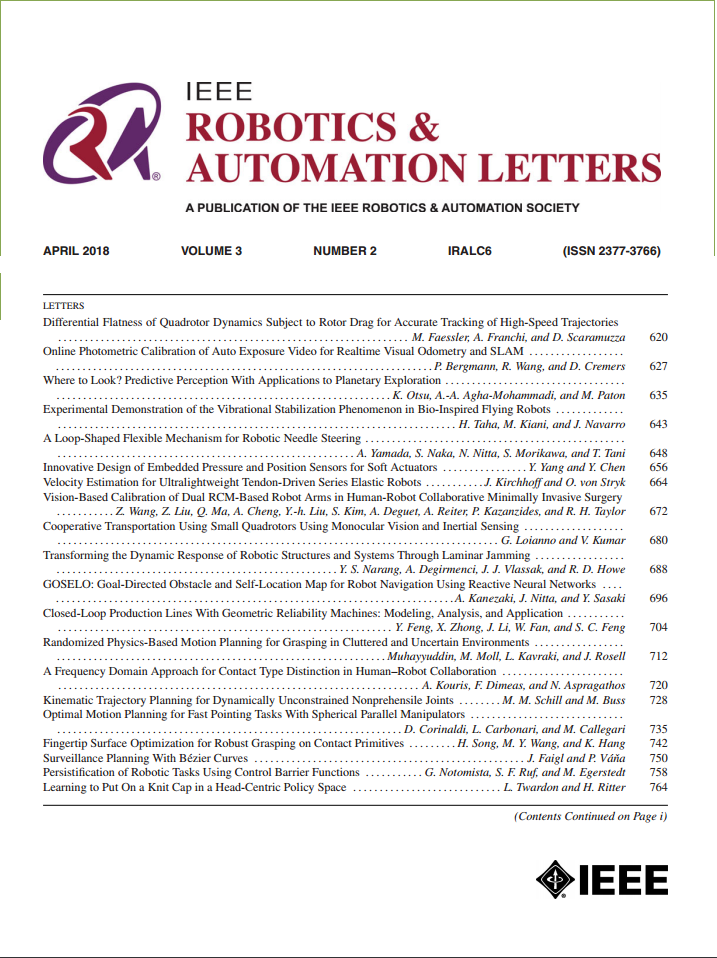SEDMamba: Enhancing Selective State Space Modelling With Bottleneck Mechanism and Fine-to-Coarse Temporal Fusion for Efficient Error Detection in Robot-Assisted Surgery
IF 5.3
2区 计算机科学
Q2 ROBOTICS
引用次数: 0
Abstract
Automated detection of surgical errors can improve robotic-assisted surgery. Despite promising progress, existing methods still face challenges in capturing rich temporal context to establish long-term dependencies while maintaining computational efficiency. In this letter, we propose a novel hierarchical model named SEDMamba, which incorporates the selective state space model (SSM) into surgical error detection, facilitating efficient long sequence modelling with linear complexity. SEDMamba enhances selective SSM with a bottleneck mechanism and fine-to-coarse temporal fusion (FCTF) to detect and temporally localize surgical errors in long videos. The bottleneck mechanism compresses and restores features within their spatial dimension, thereby reducing computational complexity. FCTF utilizes multiple dilated 1D convolutional layers to merge temporal information across diverse scale ranges, accommodating errors of varying duration. Our work also contributes the first-of-its-kind, frame-level, in-vivo surgical error dataset to support error detection in real surgical cases. Specifically, we deploy the clinically validated observational clinical human reliability assessment tool (OCHRA) to annotate the errors during suturing tasks in an open-source radical prostatectomy dataset (SAR-RARP50). Experimental results demonstrate that our SEDMamba outperforms state-of-the-art methods with at least 1.82% AUC and 3.80% AP performance gains with significantly reduced computational complexity.基于瓶颈机制和精细到粗时间融合的选择性状态空间建模在机器人辅助手术中的有效错误检测
手术错误的自动检测可以改进机器人辅助手术。尽管取得了可喜的进展,但现有方法在获取丰富的时间上下文以建立长期依赖关系同时保持计算效率方面仍然面临挑战。在这篇论文中,我们提出了一种新的分层模型SEDMamba,它将选择性状态空间模型(SSM)结合到手术错误检测中,促进了具有线性复杂性的高效长序列建模。SEDMamba通过瓶颈机制和精细到粗糙的时间融合(FCTF)增强选择性SSM,以检测长视频中的手术错误并在时间上定位。瓶颈机制在空间维度内压缩和恢复特征,从而降低了计算复杂度。FCTF利用多个扩展的1D卷积层来合并不同尺度范围内的时间信息,以适应不同持续时间的误差。我们的工作还贡献了第一个同类的,帧级的,体内手术错误数据集,以支持真实手术病例的错误检测。具体来说,我们部署了临床验证的观察性临床人类可靠性评估工具(OCHRA)来注释开源根治前列腺切除术数据集(SAR-RARP50)中缝合任务中的错误。实验结果表明,我们的SEDMamba优于最先进的方法,至少有1.82%的AUC和3.80%的AP性能提升,并显著降低了计算复杂度。
本文章由计算机程序翻译,如有差异,请以英文原文为准。
求助全文
约1分钟内获得全文
求助全文
来源期刊

IEEE Robotics and Automation Letters
Computer Science-Computer Science Applications
CiteScore
9.60
自引率
15.40%
发文量
1428
期刊介绍:
The scope of this journal is to publish peer-reviewed articles that provide a timely and concise account of innovative research ideas and application results, reporting significant theoretical findings and application case studies in areas of robotics and automation.
 求助内容:
求助内容: 应助结果提醒方式:
应助结果提醒方式:


